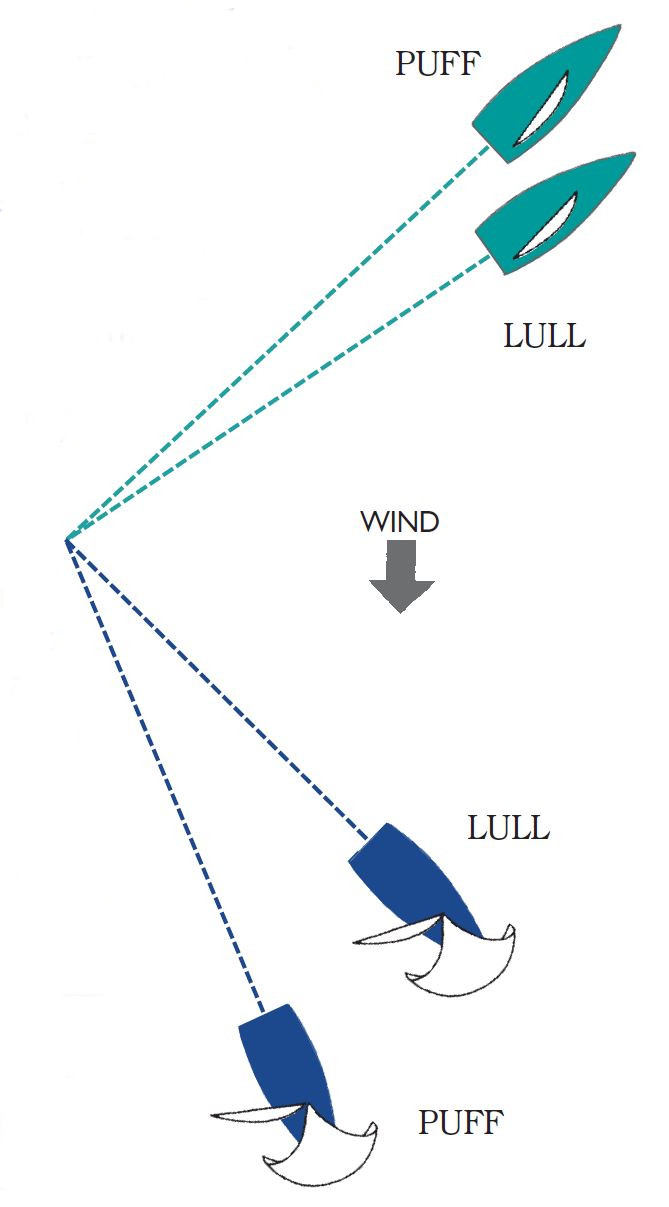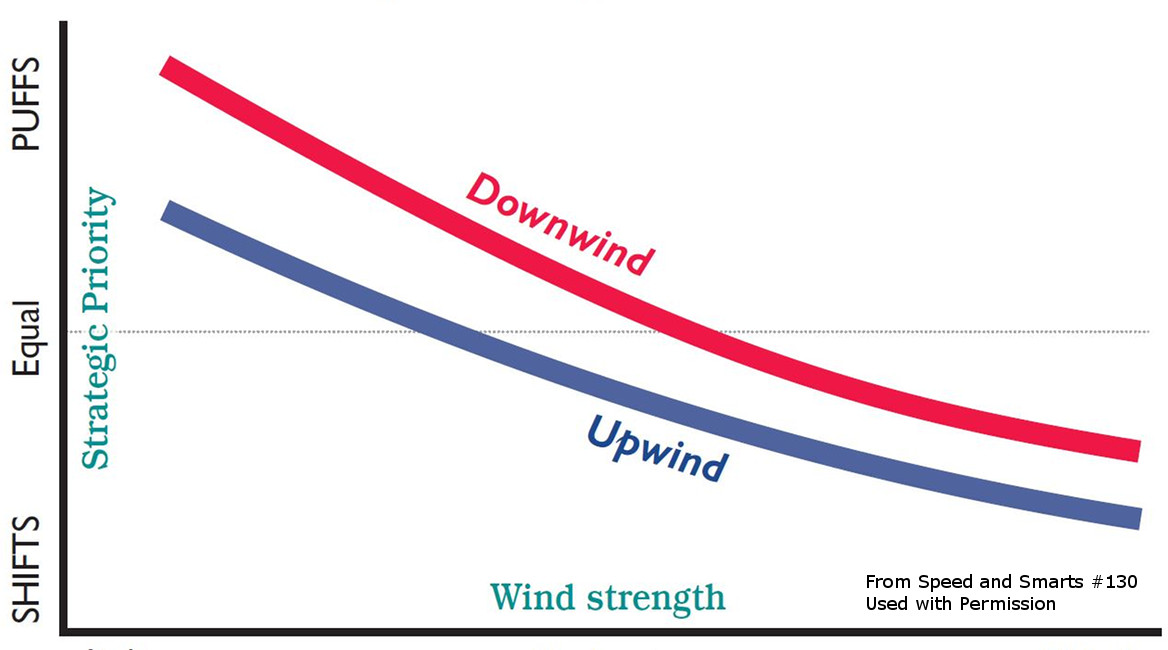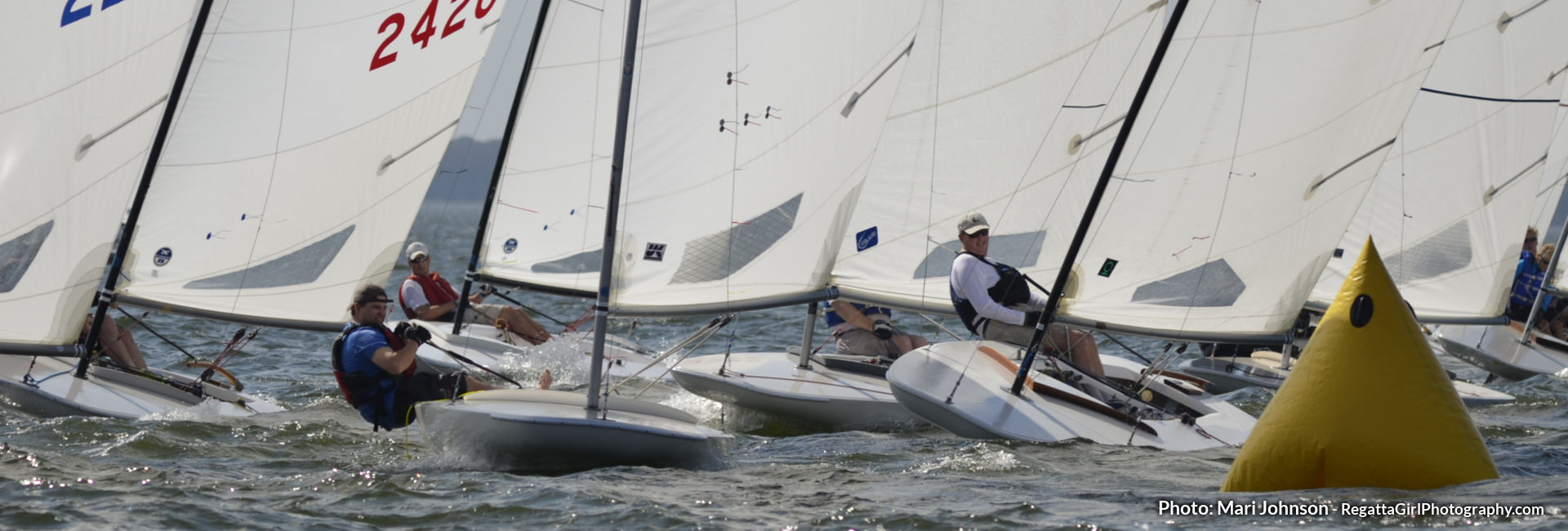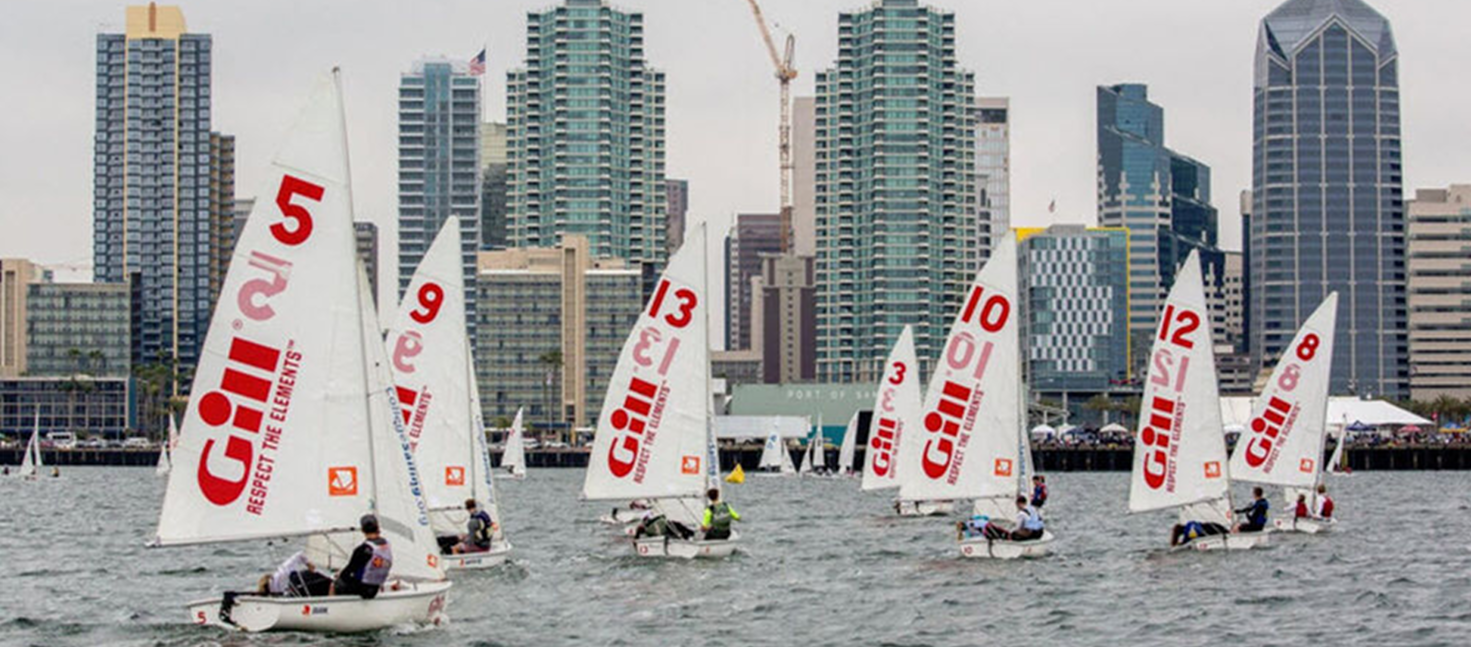In Speed and Smarts #130, Dave Dellenbaugh provides a simple graph to help you determine strategic priorities for a race. In this article, with Dave’s permission, we’ll recap his discussion of what’s behind the graph.
Priorities – Heavy vs. Light Air
In heavy air, most boats already have plenty of wind. They are probably going close to hull speed most of the time, so getting more wind velocity will not increase their speed very much. Since there is not much benefit in getting to a puff, playing the shifts is more valuable and therefore a priority.
In contrast, boats are always under-powered in light air, so more wind pressure is extremely valuable. A puff will make a large difference in your speed through the water, plus it will let you sail higher upwind and lower downwind (sometimes a lot lower!)
Note that the graph is a downward sloping curve, indicating that as the breeze builds the relative importance of puffs decreases and the importance of shifts increases. At some point in medium air, the strategic priorities between puffs and shifts become relatively equal.
Priorities – Upwind vs. Downwind
Dave’s graph also illustrates a difference in strategic priorities between downwind and upwind sailing. Puffs are more important in downwind sailing than they are upwind. Two reasons:
Puffs Last Longer Downwind
In the drawing below, the boat going upwind is moving in the opposite direction as the puff, so she sails through the puff relatively quickly. But the boat going downwind is moving in the same direction as the puff, so she is able to stay with the puff a lot longer.
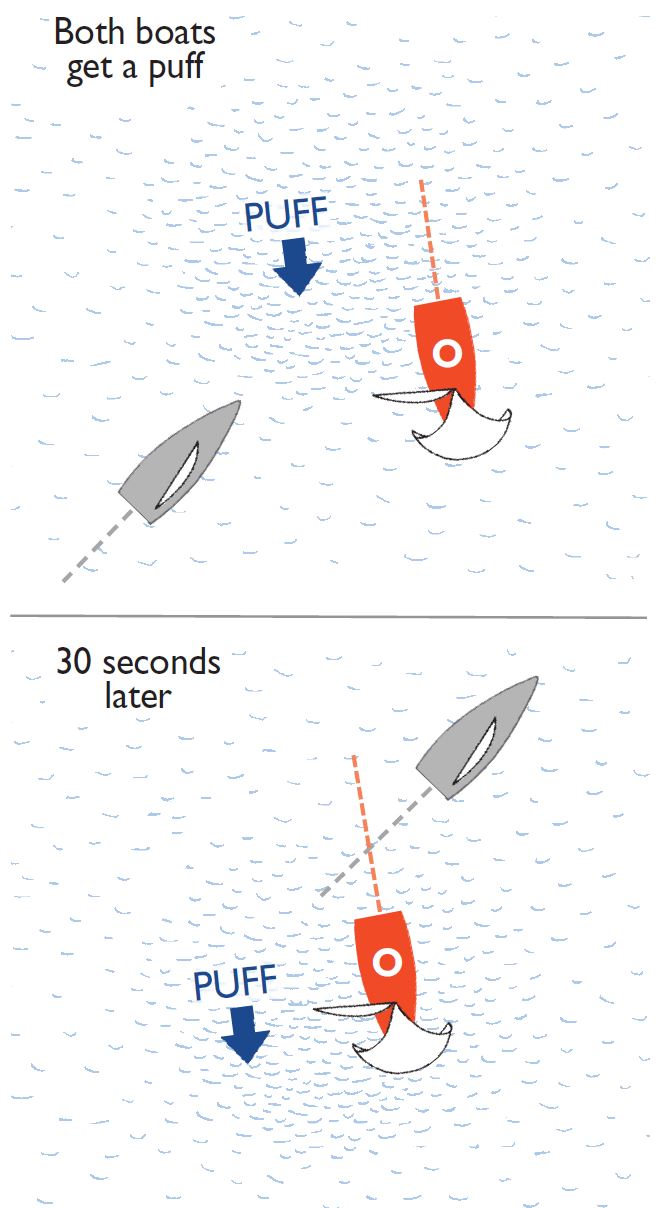
Puffs Have a Bigger Impact on Speed and Angle Downwind
A puff allows you to sail higher on a beat and lower on a run. This effect is greater downwind. Compare the upwind and downwind boats’ response to a puff in the diagram below. When you’re sailing downwind in light or moderate wind, even a small amount of extra pressure can make a huge difference in how deep you can sail. For example, if you are sailing in five knots of wind and you get just a two-knot increase in wind velocity, you may be able to sail 10° or 15° lower! Obviously, the ability to sail this much deeper (and to go faster at the same time) will get you to the leeward mark sooner.
